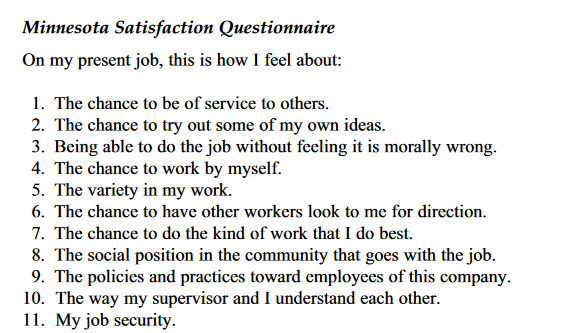Hi @SpanishTony!! Welcome to the forum!!
I definitely can relate with your frustration of wanting answers from your advisors and getting any. However, keep in mind that this is YOUR project and not theirs. So I kind of understand their take on not giving you any directive answer. On this topic, I recommend you investigate what you want to do, build a rational decision for why you want to pick the given approach, develop what you can, and show them to pick their opinion. Do first, ask questions later. This way they will opine on something more concrete rather than possibilities.
I recently dropped out of a Management program and now I am applying for Organizational Development programs. So I believe our fields have some similarities such that I believe I understand your questions about the papers feeling kind of incomplete. From my experience with the Management literature, I have always seen studies using or even assessing the quality of measures without presenting them in the actual paper. And I have never seen anyone mentioning anything about page limits for it.
On your comments about the evaluation of the framework, I assume that the publication of the framework is some kind of its assessment because the paper is (probably, so I recommend you to check this) peer-reviewed. About the methodology being used, this is something I have been scratching my head for a very long time in my field, so if the process is the same (which I believe it probably is) the methodology for building it is simple reasoning coming from the literature review used and probably presented in the paper. In my field, I always felt it was some kind of black box that no one talked about but I recently discovered that it is way simpler than I thought. This may be your case too.
Another option for you is simply to send the authors of the papers you read an email asking them that question. I have been pulling this “crazy” move and everybody has been more than happy to share their work and thoughts about their work!
This is a really basic question, for the project, can I produce any kind of artefact/hypothesis and then evaluate it?
Now that is the million-dollar question!! Yes and no. Can you do it? Yes, you can. It is your study, so as long as you keep the rigor from the research field, you can do anything you want. But let’s separate your question into two parts here.
When it comes to creating any possible hypothesis, then yes. You sure can. As long as you are able to (1) review the existing theory about the topics you want to talk about, and (2) build a rationale that would support your hypothesis, then that’s it. Go for it.
Now when it comes to creating an “artifact” the idea that comes to my mind is creating a measure, a set of items/questions destined to quantitatively measure the construct you created. Can you do it? Yes, you can. Should you do it? I would not recommend it because doing it in the proper way takes time and effort and I do not believe you should focus on it in your Master’s dissertation.
However, considering it is a master thesis rather than an actual paper to be published, your advisors may give you some leeway about the rigor of your measure.
P.s.: Sorry for giving you the f%cked up answer “it depends” but in the end it really does… 
To understand more about designing measures I highly recommend you the book Salkind, N. J. (2017). Tests & Measurement for People Who (Think They) Hate Tests & Measurement (3rd edition). SAGE Publications, Inc. You can find a copy on the internet. Chapters 3 to 6 will give you a general idea of what you need to validate a measure you create. It is a very easy reading so the return over your time invested will definitely be paid.
Before saying anything about the second part, what do you mean by “framework / excel sheet / some other artifact”? Because when you say excel sheet and artifact what comes to mind is some kind of measure (questions to measure a construct as mentioned before) but when you say framework it comes to mind a model showing a relationship between construct A and construct B.
If it is about the measure then you are right. It is qualitative and it is called content validity. If it is about a model showing the relationship between 2 constructs then the optimal scenario would be to have an empirical study showing that relationship. Sometimes that is not possible for a myriad of reasons then that would be a conceptual paper. If that is the case, the evaluation is qualitative through logical reasoning laid out in the paper itself. The goal, in this case, is (should be) to put the idea out there, generate a conversation, and in the future create a measure to empirically identify this relationship.
I hope I have helped you man!! I know how it is to try to do something in this messy world of social science without any support. For instance, most of the things I shared with you here I just learned on my own in the past few months.
Let me know if I can help you somehow!!
Best,
Diego Tavares
